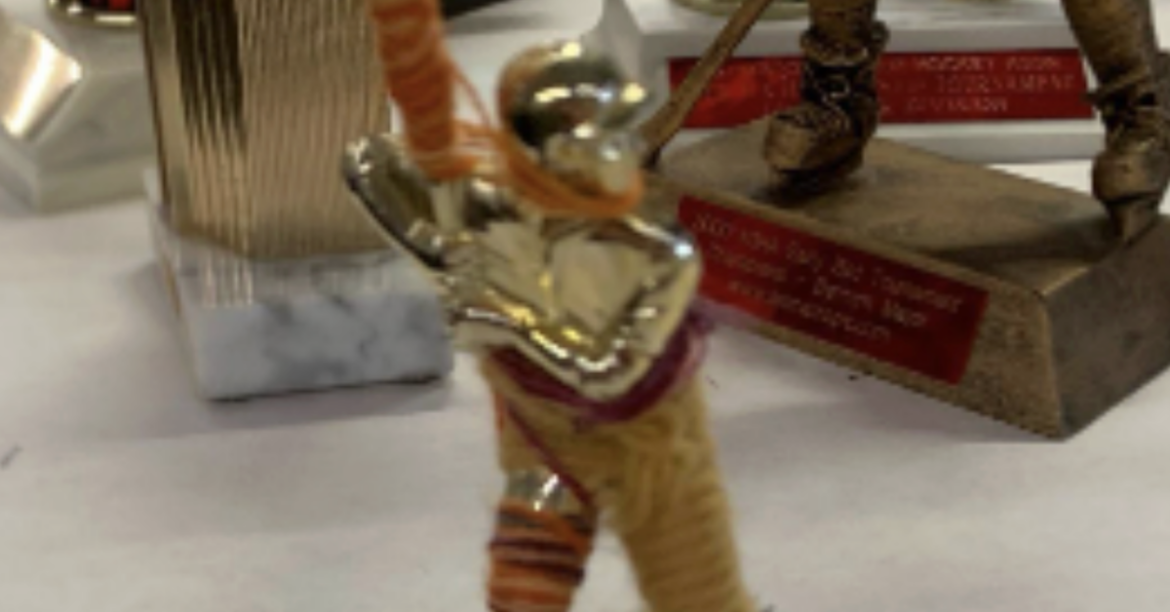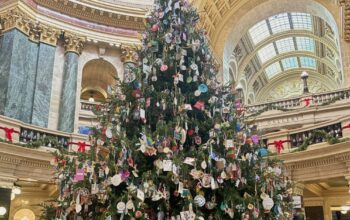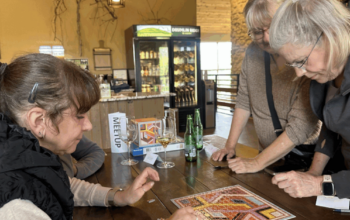While wishing for a mythical creature may seem far-fetched, local artist Maria Schirmer Devitt sees the importance of everyone’s perspective in the Bubbler Room of the Madison Public Library, where she recently facilitated what she describes as a form of subconscious art therapy.
Schirmer Devitt, 37, began her Bubbler residency last fall focussed on building a space for wishes in the Bubbler Room. A unique branch of the public library, the Bubbler Room is dedicated to connecting local artists with the community through hands-on exhibitions and events.
After receiving her masters in social work, with an emphasis on trauma-informed care, from University of Wisconsin-Milwaukee, Schirmer Devitt found herself focussing on how people heal. She felt that art could be therapeutic in a more subtle fashion compared to more traditional counseling, and she looked to capitalize on that belief during her residency.
Shirmer Devitt’s opening workshop, “Wish On A Stick,” inspired by her experience in Silver City, New Mexico, allowed members of the public to decorate recycled sports trophies with all sorts of craft supplies, labeling them with a personal wish.
Along with this event, an ongoing project run by Schirmer Devitt allowed people to drop a wish in a box after typing it out using an old-school typewriter. These slips of paper held the feelings and desires of anonymous people, their wishes ranged from hoping for kindness in the world to helping people in need to owning a pet dragon.
Schirmer Devitt’s workshops throughout her residency echoed this common theme of people’s dreams no matter how big or small they may appear.
Schirmer Devitt believes that everyone has a voice and there is truth to acknowledging the things that we wish for in the future even though they may be far away.
“Creating a space where we can do that together feels like we’re not all alone in wanting things to be different,” she said.
Schirmer Devitt believes that community-based art can act as a catalyst for healing through the mind and body. While a person may not have words for their trauma, creating art opens up avenues of expression, and the presence of others engaging in a similar activity helps to heal us mentally.
Shirmer Devitt said that while people often experience harm due to relationships with others, “that’s also the way that we heal. We heal in relationships with each other.”
Other members of the Madison art community have validated this line of thinking, including Lynda Barry, associate professor of interdisciplinary creativity at UWMadison.
Barry, like Schirmer Devitt, believes in the connection that art has with the mind and body. Barry said that in order to discuss a problem, one does not have to directly state the issue.
“It’s that act, the certain state of mind with a physical activity that actually addresses the problem,” Barry said.
Barry expanded on the topic using the metaphor of our immune systems, noting that bodily functions react subconsciously in a way that is similar to how people interact with community art. Barry also used the example of musicians to further illustrate her point.
“It’s like playing music, I think,” Barry said. “I think that you can practice all you want by yourself, but it is not until you get with a group that this bigger thing starts to happen.”
Schirmer Devitt’s workshop reflects this philosophy in a beautiful cycle of positive energy that is put in motion through the theme of wishes.
“We’ve all experienced some level of suffering,” she said, “and to be able to have spaces where we can be with one another to either work through that or just be in a different relationship, feels powerful for me.”






